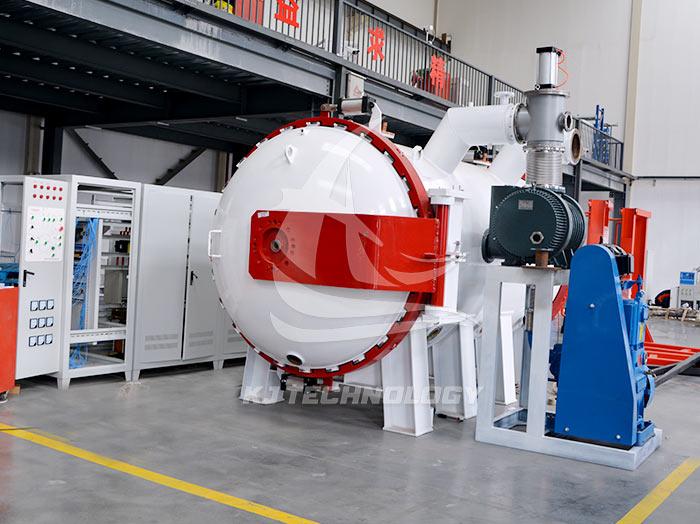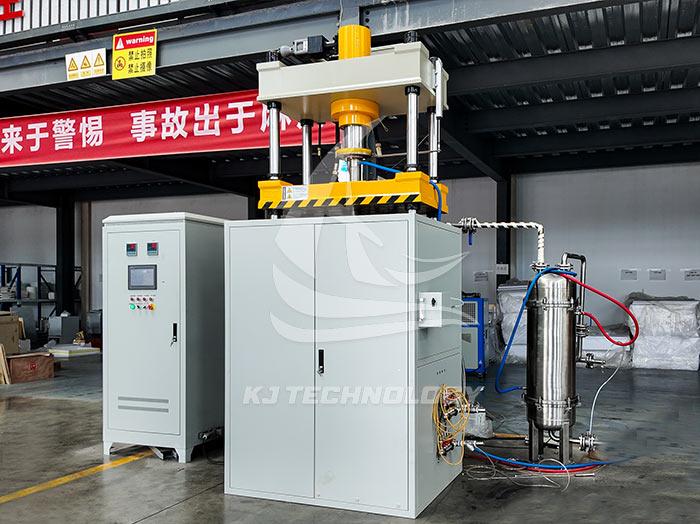Application of Vacuum Muffle Furnace in Ceramic Industry
 08-04-2025 Author: KJ technology
08-04-2025 Author: KJ technology
The vacuum muffle furnace is widely and crucially used in the ceramic industry. By providing high-temperature heating conditions in a vacuum environment, it significantly improves the performance and production quality of ceramic materials. The specific application scenarios and advantages are as follows:
1. Core application scenarios
High performance ceramic sintering
Application materials: Advanced ceramics such as alumina, silicon nitride, and silicon carbide.
Technological advantages:
Avoid oxidation: The vacuum environment prevents ceramic particles from oxidizing at high temperatures, reduces surface defects, and increases density.
Accurate temperature control: Through the PID intelligent temperature control system, temperature fluctuations of ≤± 1 ℃ are achieved to ensure the stability of the sintering process.
Atmosphere regulation: Supports inert gas protection such as nitrogen and argon to meet the specific ceramic's demand for reducing atmosphere (such as high alumina ceramics requiring reducing atmosphere to maintain strength).
Typical case:
Sintered silicon nitride ceramic bearings with a hardness of HRA 92 or higher and a threefold increase in wear resistance.
Preparation of alumina ceramic substrate with porosity reduced to ≤ 0.5% and thermal conductivity increased to 28W/(m · K).
Manufacturing of electronic ceramic components
Application areas: Multi layer ceramic capacitors (MLCC), piezoelectric ceramic filters, thermal barrier coatings, etc.
Technological advantages:
Gradient heating: multi-stage program temperature control (such as 30 programmable stages), simulating complex process conditions (such as low-temperature degreasing followed by high-temperature sintering).
Interface optimization: Accurately control the thermal expansion matching between the coating and the substrate, reducing cracking caused by thermal stress.
Typical case:
Sintering YSZ (yttria stabilized zirconia) thermal barrier coating enhances the temperature resistance of gas turbine blades by 200 ℃.
Prepare MLCC with over 1000 layers and improve capacitance accuracy to ± 5%.
Bioceramic material processing
Application materials: medical ceramics such as hydroxyapatite (HA) and tricalcium phosphate (TCP).
Technological advantages:
Improving biocompatibility: Vacuum sintering reduces surface pores and lowers the risk of inflammatory reactions after implantation.
Enhance mechanical performance: By high-temperature densification, the bending strength of HA is increased to over 120MPa.
Typical case:
Sintered HA artificial bone scaffold with porosity controlled at 60% -80% to promote bone cell growth.
Preparation of TCP dental implants with twice the wear resistance of traditional materials.
Ceramic metal composite material connection
Application scenarios: Connection between ceramic nozzles and metal conduits, bonding between ceramic based composite materials and metal substrates.
Technological advantages:
Vacuum brazing: Using silver copper titanium active brazing material, reliable connection between ceramics and metals is achieved under vacuum, with joint strength reaching over 80% of the base material.
Reduce interface reactions: The vacuum environment suppresses harmful reactions between metals and ceramics, such as the formation of brittle phases through the reaction of titanium and alumina.
Typical case:
Connecting alumina ceramics with stainless steel, used for aerospace high-temperature components, with a working temperature of up to 1200 ℃.
Preparation of Al ₂ O ∝/Al metal matrix composite material with increased interfacial bonding strength to 150 MPa.
2. Industry Development Trends
Intelligent upgrade: Integrating IoT technology to achieve remote monitoring and real-time analysis of process data (such as automatic optimization of temperature time curves).
Green manufacturing: adopting low nitrogen oxide combustion technology to reduce exhaust emissions and meet environmental protection requirements.
Ultra high temperature expansion: Developing graphite heating elements with a maximum temperature of 3000 ℃ to meet the needs of silicon carbide fiber-reinforced ceramic matrix composites and other materials.
Miniature design: In response to laboratory requirements, a miniature vacuum muffle furnace with a volume of ≤ 0.1m ³ has been launched to reduce research costs.








